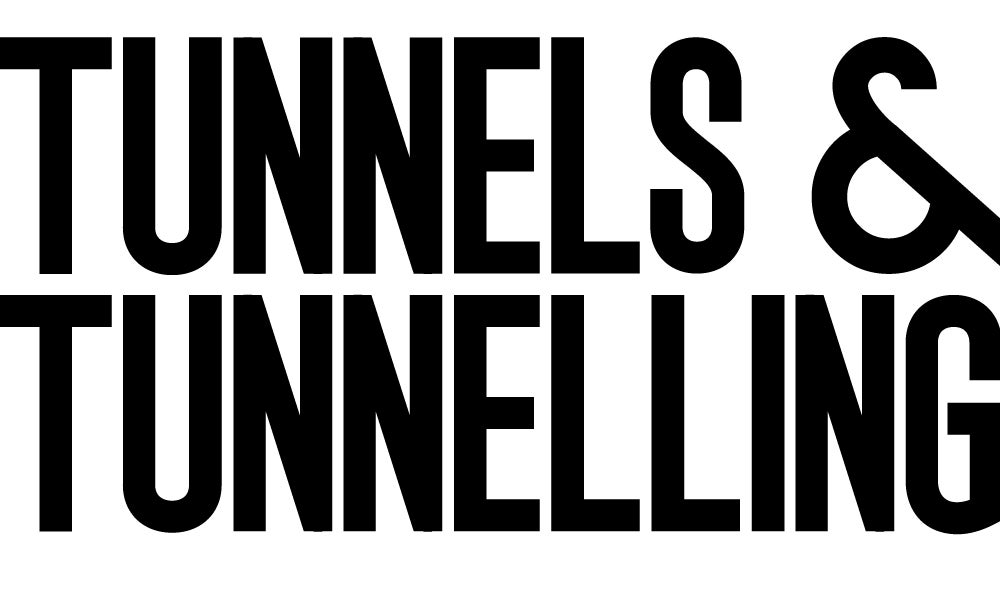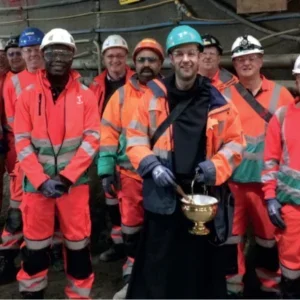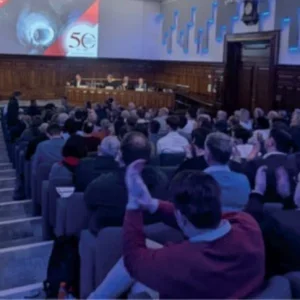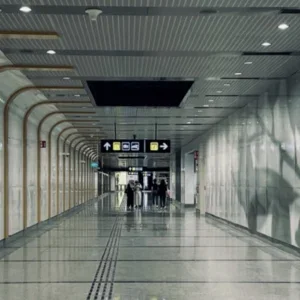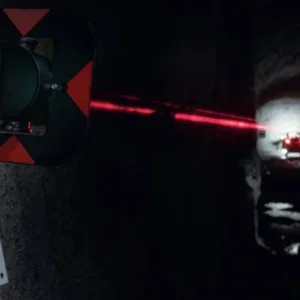The original Thames Tunnel Project (1825-1843) was driven with the first ever tunnelling shield design, and resulted in the deaths of seven men. One of the major floods injured and nearly killed Isambard Kingdom Brunel himself, purportedly as he was saving several others. In addition to the regular water inflows and marsh gas ignitions, the project "driven from a depth of 60ft [18m], by a capacious apparatus, denominated the shield" had only cost GBP 120,000 "notwithstanding difficulties and accidents", according to the Thames Tunnel Office in a report from 1835.
The shield acted, as the report puts it, as a kind of horizontal cofferdam, and protected the workers. To an extent. "Working in the tunnel the air quality was appalling with the workers frequently being dragged senseless up to the surface to recover in the fresh air. The River Thames was no better than a sewer, and the sewage entering the tunnel gave off methane gas which was frequently set alight by the candles that provided a dim light for the workers – there were no miner’s safety lamps in the Thames Tunnel," – Brunel Museum.
In modern times, the view is that health and safety concerns are strong enough to ensure a protected and pleasant working environment. Perhaps the occasional catastrophe from the mining sector, or the daily human cost of mining in China is the exception to this.
Options
Although the primary causes of accidents in tunnels are slips, trips and falls, and many would have the safety focus on these, there are passive measures that can be put in place to ensure a non-toxic working environment. As evacuation is always the preferred means of worker protection, monitoring systems are key to protection in the tunnel environment.
The factors frequently monitored are gas, fire, temperature, pressure, air velocity and dust.
A spokesman for monitoring equipment manufacturer Trolex tells Tunnels that typically a project will demand a complete system from a manufacturer, rather than cherry picking from different suppliers. The spokesman emphasises that despite this, flexibility is important to make sure a customer does not have to make any compromises.
Although it is not usually a requirement to provide individual components of a system to a construction project, the best examples of bespoke systems are actually the permanent solutions. The spokesman gives the ‘National Grid Head House Gas Systems’ in the UK as an example. "This incorporated our gas sensors which went back to a PLC panel that was built by Trolex, and utilised other suppliers parts. This panel also gave digital outputs to the head house main control system, which allows end customer systems to be integrated into our system, for example if a gas alarm goes into an alarm state then the local PLC will also be alerted."
Detection process and reaction
With gas (methane) detection, as an example of how a typical monitoring system works, when it reaches a pre-determined level, the machine is switched off and the tunnel evacuated.
Often this is achieved with a ‘traffic light’ style warning system and the appropriate responses are taught in regular health and safety meetings.
Dust
On certain issues, some people think the industry is not going in the right direction. Dust can come from a number of sources: pneumatic breaking of concrete, shotcreting works and moving spoil, among others. Keith Bowers, engineering professional head for tunnels at London Underground (LU) says dusty worksites are a significant concern of his right now.
"My perception is that we are not making as much progress as we could be as an industry. When I started as an engineer using dry mix, dust was a real problem. I think people may have become less sensitive to the dust issue because we are still noticing dust on site.
"It’s an ethical question: if people in the street would complain about it, why should it be ok on worksites? Responsibility for managing dust is shared throughout the supply chain. For example, plant should be designed to protect the operator in the tunnel environment, and the contractor should be using plant correctly for the safety of the operator.
"The contractor has direct responsibility for the safety of the workforce, but we must also recognise that the design of the works and the design of the plant will have an influence, so all parties must have some responsibility."
Roger Bridge, tunnelling manager at Balfour Beatty somewhat disagreed with Bowers, "I can only comment on my own worksites, but it is just important to make sure severe dust exposure doesn’t happen. This is perhaps harder these days as we have more heavy mechanical breakers and sources of dust generation, but we are more environmentally aware."
Bridge added, "My work at the A3 Hindhead tunnel project [in the UK] is a good example of this. New, stricter requirements were brought into force post-award with EH40/2005 and HSE regulations. The revised limits brought the maximum number of particles down from 0.3mg/m3 to 0.1mg/m3 for respirable crystalline silica dust.
"We used dry de-dusters to deal with the particulate matter from the excavation in sandstone. It was a very clean site, though it is the invisible particles that can enter capillaries and cause lung issues. We looked at a drum cutter for heading excavation, but in the end we adopted a ripper bucket so we weren’t breaking the rock into such fine pieces. Adopting a conveyor belt meant trucks were not generating dust or fumes within the tunnels."
Bridge discusses the common practice of personal exposure detectors. But points out that even these, and the in tunnel dust stations, require laboratory analysis for measurements to be fully understood. There is no way it seems to get an accurate, instantaneous measure of dust exposure.
Keeping the roof up
In his paper, ‘Innovations and improvements of technology and data management systems to monitor large scale tunnelling works’, Jon Scott, managing director of UK-based geotechnical monitoring specialist Itmsoil, describes recent advances in technology that have allowed monitoring to become a critical element of tunnelling projects.
Four main factors have driven down the cost of monitoring. The automisation and miniturisation of sensors makes them quicker to install and far less obtrusive in an environment where space is at a premium; they are also "virtually immune" to temperature and RF interference.
In addition, data collection methods are more stable than before, and can be reliable over mobile phone and Wi-Fi through other portable devices. Software has also advanced; easing data acquisition, database processing, presentation and user access.
With sizes reducing from centimetres and inches to a matter of millimetres (and sometimes a cost reduction factor of 10), Scott adds that the vast increase in the number of sensors sees data transmission take on a greater importance than ever before. While a handful of sensors can be each connected to a data logger by individual cables, the number of modern sensors would make this costly, time consuming and hazardous.
Scott cites a recent project where cable installation and protection took three times as long as sensor system installation. The benefits of modern wireless technology are obvious.
Finally, he points to energy harvesters. These small devices can harness vibration or thermal energy and convert it into electricity, which is small but usable. All of these advances have brought monitoring from the periphery of a project into being a mainstream consideration, Scott concludes.
Personnel monitoring
Bernhard Wimmer, managing director of Austria-based tunnelling and mining equipment distributor Durstmueller tells Tunnels of a less typical type of monitoring that just came into tunnelling, with a first case of use at Crossrail C300/410 in London, UK.
The basic idea is to provide active radio frequency identification (RFID) tags, roughly the size of bank cards, to certain tunnel workers. The tags have a built-in lithium battery that sends out a signal every 1.5 seconds at 433MHz to receivers wherever an operator would like to place them. The maximum range is approximately 100m depending on the type of antenna that is used.
The readers are linked to a computer that processes the data, which can render a real-time visual status display and can also switch components and systems on or off.
The RFID tags can keep tabs on where workers are, or how many, or who is in the underground environment. But they can also enable rig proximity detection. The placement of readers in rugged housings at key points on drilling rigs (or any plant) can create an unbroken worker detection zone around the machine. The potential uses are well demonstrated by the Crossrail case.
"We have installed the very first system on a Robodrill (formerly Montabert) drill rig," says Wimmer. "Our system interfaces with the drill rig and we have arranged different ‘classes’ of users: pilots, copilots and (normal) workers.
"In general the workers should be protected against the dangers of a rock drill under operation. Depending which class [of worker] a detected transponder is related to, the drilling will be influenced accordingly."
Wimmer adds that, for example, if a ‘normal’ worker is detected in the vicinity of the rock drill, drilling will be stopped. If a co-pilot is detected, drilling will be stopped unless the co-pilot is in the basket and presses a special pedal there. The machine will continue drilling then, but with a reduced speed. If the co-pilot is in the baskey and closes all windows such that the rock drill cannot harm him, drilling can continue at full speed, despite his detection by the system the person is being detected.
"There are several combinations of ‘what if’ scenarios programmed for the best safety and protection of employees," he says.
Wimmer adds on reflection, "A very good combination is to add [complete] personnel (and eventually object) tagging and tracing system. If all the employees on site are equipped with a tag, this is just the logical next step for more safety. It can automatically be displayed how many people there are, and where they are underground. Even if people are moving inside vehicles like cars, trucks or trains."
The battery life is around 3.5 to four years. A limitation of the system is if a miner does not wear, or has a defective tag.
Refuge chambers
Finally the refuge chambers of the mining industry are more and more common in tunnelling. The latest (2011) update of BS6164 requires a refuge chamber in tunnelling. Standards see them able to withstand pressures in excess of 15psi and can support eight to 24 miners for several days when disconnected from surface power.
Companies such as Trolex with their refuge chamber partner Strata Worldwide were involved, as well as others such as Mine Arc, with the mining world’s requirement for refuge chambers/ safe havens.
There are systems available to provide readings and data on the internal and external environment. The actual control of oxygen supply and CO2 control is already part of the integral chamber operations, and not part of a separate system.
